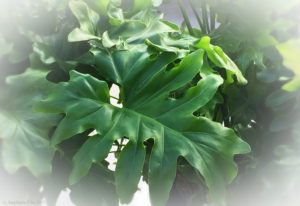
All Hail the Lotus!
There’s a reason the lotus appears on virtually every psychotherapy (and spa) website from the east to the west of the internet. Not only is the lotus beautiful, but it grows out of mud, so it makes a great therapy metaphor. And you get to quote Thich Nhat Hanh, which is always a plus.
But that is not a lotus, you notice.
Ellis, why do you have a common houseplant on your blog?
Let me introduce you to the philodendron, the underappreciated gardening-therapy metaphor. The philodendron is an ordinary, yet extraordinary, plant.
First, it can grow almost anywhere, in almost any way. It can have roots underground and/or above ground. It can get all of its needs met through the soil, through rain, or even just through the air. It changes its growth methods based on the resources available, its own maturity level, and its changing needs for nutrients and light. The philodendron can live and thrive in almost any environment.
It makes symbiotic relationships with other plant and animal life, wherever it finds itself. This includes its neighbors – nearby plants and the trees on which it sometimes grows. It also includes traditionally undesirable companions, such as ants, trading shelter for the ants’ nests in return for the ants’ protection. Oh, and they have good boundaries – their glossy leaves are a natural deterrent to many insects and larger herbivores, like deer, so they don’t get taken advantage of easily.
When it is time to grow new leaves, the philodendron first creates a small pocket of protection for the new sprout. Once it’s grown enough, this pocket is no longer needed, and it lets it go. When it does, it leaves a tiny scar – a reminder.
There are almost 500 recognized subspecies, and even philodendrons from the same subspecies will look different depending on their stage of life, the specific environment they’ve grown in, and the various resources available.
They’re happy to “stay single,” mate with other philodendrons, or hybridize with other plants. They may enjoy a full life a few feet tall, close to home at the base of a tree. Or they may grow outward, covering tropical forest floors or gloriously wild backyards. Some will grow spectacularly tall, using nearby supports to reach heights of over 1000 feet high. They’re even happy to hang out in your house.
Best of all – I found out about philodendrons because I have something of a black thumb… I don’t seem to care very well for things that don’t communicate verbally. They’re virtually indestructible. And you can trust me, because I’ve even killed aloe vera. More than once.
Now tell me, do you want your clients to be a lotus? Or to be like the incredibly hardy, adaptable, diverse, relationally competent philodendron?
Or, leave a comment with your own plant-metaphor!